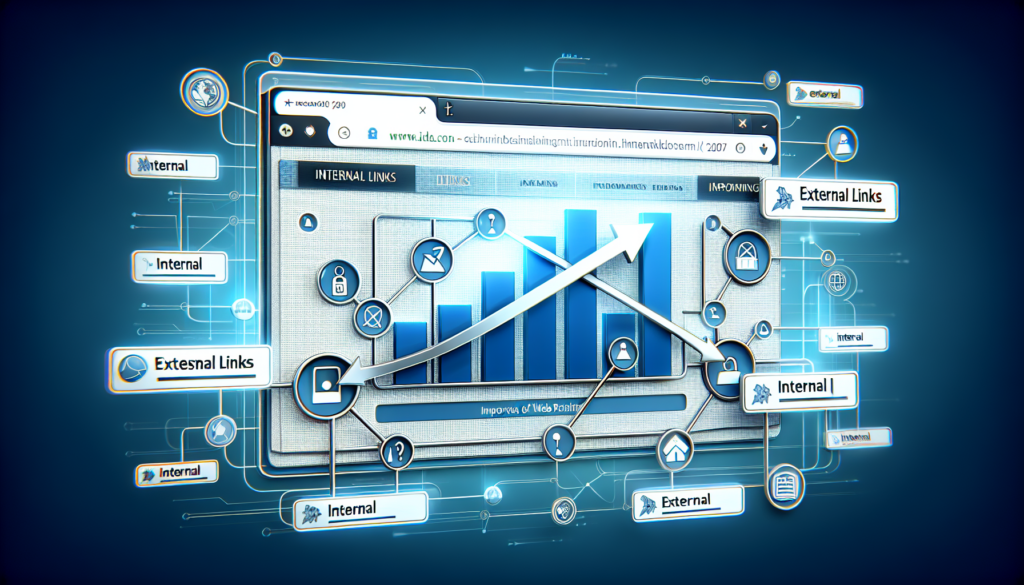Within the digital ecosystem, the visibility of a website is crucial for its success. Search engines operate under complex algorithms that decide which content is relevant to users based on a multitude of factors, among which internal and external links hold a dominant role. Understanding their importance and optimization is essential for any SEO (Search Engine Optimization) strategy.
Internal Links and Their Influence on SEO
Internal links are those that connect one page of a website to another page of the same site. These links serve a dual essential function: they improve navigability and contribute to establishing an information hierarchy within the web.
Hierarchy and Distribution of Authority
Internal links guide search engines to understand the website’s structure, allowing search crawler spiders to discover how content is organized and what its relevance is. A solid map of internal links distributes authority, known as PageRank within Google, across the most important pages, increasing the likelihood that these will rank better in search results.
Improving User Experience
By allowing users to easily find related or interesting content, the user experience (UX) is enhanced. This can translate into increased time spent on the site, which is an indicator of quality for search engines and can improve the site’s ranking.
External Links and Their Contribution to Web Positioning
External links, on the other hand, are those that connect a page of a website with pages of other sites. These can be outbound links and incoming links (backlinks or inbound links) and exert a great influence on the online reputation of the site.
Backlinks: Trust and Authority
Backlinks are vital to SEO, as they act as a vote of confidence from other sites. A backlink from a high-authority website can significantly increase the authority of your own site. Search engine algorithms interpret these links as an indication that the content is valuable and worthy of being shared.
Risks and Quality of Links
Not all backlinks are beneficial. Links from spammy or low-quality sites can have a negative effect on ranking. A diverse and natural link profile that includes dofollow links, which pass on authority, and nofollow links, which do not pass authority but indicate an organic link profile, is imperative.
Outbound Links: Relevance and Value
Outbound links, when well selected, can enhance the relevance of the site that offers them. Linking your own content to trustworthy sources can add value and improve the user experience, something that search engines also value.
Advanced Strategies for Link Optimization
Having established the importance of both types of links, it is vital to consider advanced strategies to optimize their use.
Analysis and Link Audit
Conducting a link audit allows identifying and correcting potential problems, such as broken links that affect user experience and positioning. Specialized tools can analyze the site’s link profile and provide detailed information to improve the link strategy.
Use of Optimized Anchor Text
The anchor text is the visible text of a link. It should be descriptive and contain relevant keywords for the content it directs to, without falling into excess that may be interpreted as manipulation by search engines.
Building Quality Backlinks
Creating attractive and high-quality content is probably the most effective way to naturally obtain backlinks. In addition, outreach strategies can include collaboration with influencers, guest posting on authoritative sites, and active participation in relevant communities.
Monitoring and Continuous Maintenance
A link management program requires constant monitoring and maintenance. Backlink analysis tools can alert to new or lost links, enabling a quick response to changes.
Case Studies and Practical Applications
Analyzing case studies can provide valuable insights into the effective implementation of link strategies. For example, studies of sites that have experienced a rapid increase in their ranking after a link-building campaign offer insights into what methods are most effective and the types of links that have made the most impact.
A website that has improved its internal link structure, making it easier for search engine crawlers to index its content more efficiently, can serve as a practical example to understand the direct correlation between a robust internal link architecture and improved positioning.
At the intersection of theory and practice, the importance of internal and external links in web positioning stands out as a central focus in the ornithology of SEO. Mastery of it, far from being a dark art, becomes a calculated act of technical precision and creativity, allowing those who practice it to significantly influence the visibility and success of their online presence.

